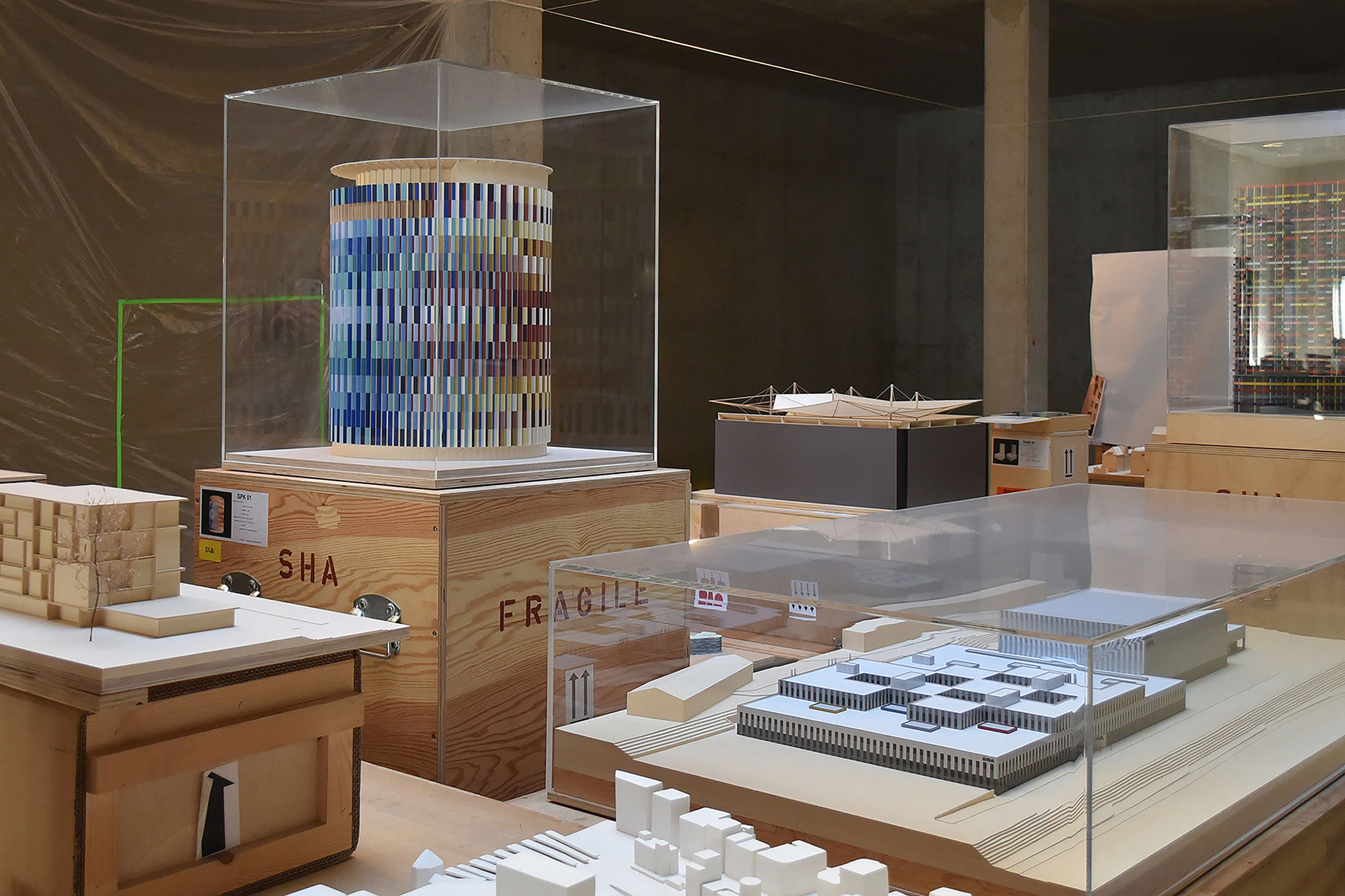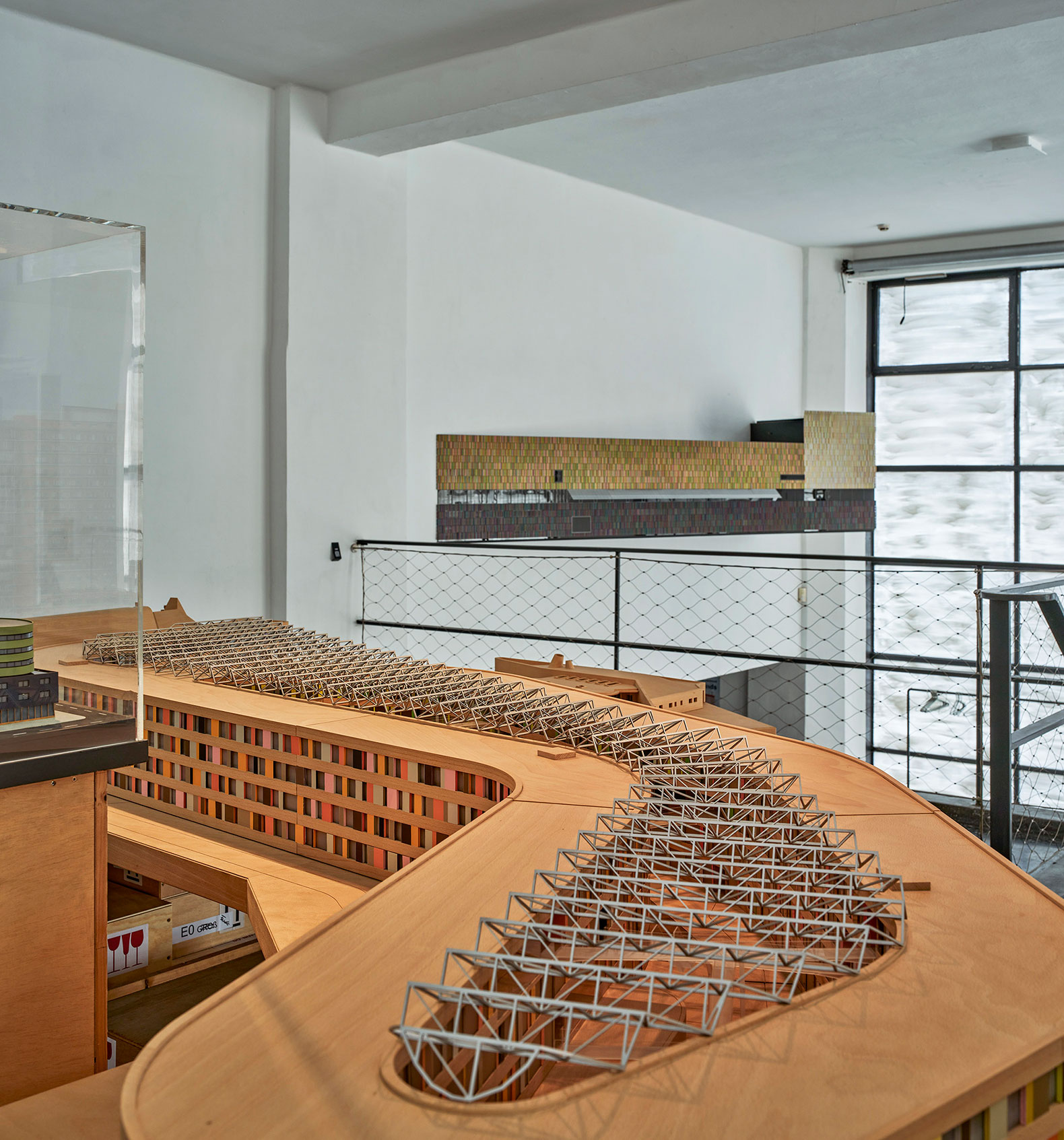Sauerbruch Hutton takes a tour through his 30 years of work, showing technical and spatial innovation from a sustainable vision in the works on display. The essence of it is reflected in the treatment that the spaces and materials receive so that the environment and urban space remain in total harmony.
The façade of the GSW high-rise in Berlin, with its rotating sunshades in gradations of pink, orange and red, the three-dimensionally textured shell of colorfully glazed ceramic rods of the Museum Brandhorst in Munich that changes with the passersby’s every step, or the red, gray and white dappled ceramic walls of the new M9 Museum in Mestre that take up on the brick tones of the surroundings.

Sauerbruch hutton: open box. Photograph by unknown author.
Colorful shimmering façades are one of the trademarks of the office founded in 1989 by Matthias Sauerbruch and Louisa Hutton. They have redefined color as a material of architecture and recognised its potential to create and form space.
One of their most recent projects is the M9 Museum Quarter in Mestre, which helps to open up a previously inaccessible part of the city to the local population through newly created connecting routes. Here, Sauerbruch Hutton showcased their work over the past 30 years in the 2021 exhibition titled "draw, love, build".
 Sauerbruch hutton: open box. Photograph by unknown author.
Sauerbruch hutton: open box. Photograph by unknown author.
The work was presented along three narrative threads, weaving together the main themes of their projects: how to deal with the post-industrial city, the concern for optimal sustainability, and the joy of sensual and surprising spaces that enrich the everyday lives of their users.
60 works can now be seen in aut. architektur und tirol and in keeping with the robust character of the former brewery, are presented on their transport crates. Due to the atmospheric density of the models in different scales and different materialities, the arrangement has the character of an expansive installation that allows different perspectives on the architectural work and can be associated with urban landscapes.
Those wishing to delve even deeper into the world of Sauerbruch Hutton will find further information, drawings, photos and films via a specially developed app. The aut:lounge, whose large windows are painted with solar-shading paint, invites visitors to linger. During the day, this softens the sun's rays; at night, the luminous glazing makes the exhibition present in the urban space.
The façade of the GSW high-rise in Berlin, with its rotating sunshades in gradations of pink, orange and red, the three-dimensionally textured shell of colorfully glazed ceramic rods of the Museum Brandhorst in Munich that changes with the passersby’s every step, or the red, gray and white dappled ceramic walls of the new M9 Museum in Mestre that take up on the brick tones of the surroundings.

Sauerbruch hutton: open box. Photograph by unknown author.
Colorful shimmering façades are one of the trademarks of the office founded in 1989 by Matthias Sauerbruch and Louisa Hutton. They have redefined color as a material of architecture and recognised its potential to create and form space.
One of their most recent projects is the M9 Museum Quarter in Mestre, which helps to open up a previously inaccessible part of the city to the local population through newly created connecting routes. Here, Sauerbruch Hutton showcased their work over the past 30 years in the 2021 exhibition titled "draw, love, build".
 Sauerbruch hutton: open box. Photograph by unknown author.
Sauerbruch hutton: open box. Photograph by unknown author.The work was presented along three narrative threads, weaving together the main themes of their projects: how to deal with the post-industrial city, the concern for optimal sustainability, and the joy of sensual and surprising spaces that enrich the everyday lives of their users.
60 works can now be seen in aut. architektur und tirol and in keeping with the robust character of the former brewery, are presented on their transport crates. Due to the atmospheric density of the models in different scales and different materialities, the arrangement has the character of an expansive installation that allows different perspectives on the architectural work and can be associated with urban landscapes.
Those wishing to delve even deeper into the world of Sauerbruch Hutton will find further information, drawings, photos and films via a specially developed app. The aut:lounge, whose large windows are painted with solar-shading paint, invites visitors to linger. During the day, this softens the sun's rays; at night, the luminous glazing makes the exhibition present in the urban space.































